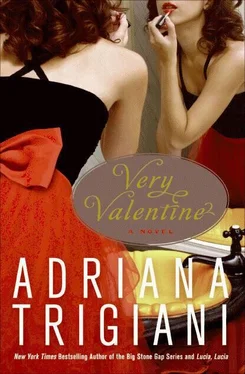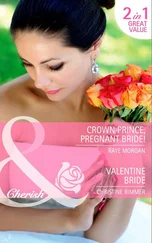I miss big, bulky old-fashioned cameras that you wear around your neck on a strap. Most of all I miss the fact that you used to have to save the film for the best moments because it was too expensive to squander. Now, we take pictures of everything, including pictures of people taking pictures. Maybe Gianluca is right, technology doesn’t lead to better living and art, it’s madness.
I love watching the boats on the Hudson River, but it is a very different thing to be on one pitching and bouncing over the waves. I am surprised at how rocky the ride actually is because from the docks, the boats appear to move smoothly over the water. Isn’t this the way it is in love? It looks so easy and effortless from the distance-but when you’re in it, it’s a different experience. You feel every bump and wonder which wave will overtake you, will you survive or drown on the treacherous water, will you make it or capsize?
Our skiff is unwieldy as we are tossed in the surf like an old plank. Big waves come out of nowhere, tossing us a foot in the air, to land us with a thud on the water. The bouncing begins anew when a new wave rolls under us. My teeth begin to hurt from the pounding of the surf against the sides of the boat. I feel the weight of every human body on this boat. We sit so closely together that when a rogue wave hits the side, it’s like the group is body-slammed with a lead pipe.
Pio guides the boat into a calm inlet (thank God) and points to a natural rock formation that resembles a statue of the Blessed Mother as she appeared in the grotto at Lourdes. Pio says the Blessed Mother is a miracle of wind, rain, volcanic rock, and faith. At that point, even I pull out my phone and take a picture.
Pio backs us out of the inlet, showing us the indigenous coral growing beneath the water’s edge along the sea wall. As the waves lap against the rocks, we catch glimpses of the glassy red tentacles of coral. I begin to cry when I remember the branch of coral that Roman gave me when he promised me this trip. The Asian woman next to me says, “You okay? Seasick?”
I shake my head no, I’m not seasick, I want to scream! I’m heartsick! Instead, I smile and nod and look away at the ocean. It’s not her fault that Roman Falconi didn’t show up! The stranger is just being polite, that, and she doesn’t want me throwing up on her faux Gucci purse.
As Pio guides the boat back onto the sea, and we are tossed to and fro anew, I see lots of other boats like ours stuffed with shoulder-to-shoulder tourists making the rounds. When we pull out of one inlet, another boat pulls in to take our place.
“When are we going to see the Blue Grotto?” the American husband of the American wife asks.
“Soon, soon,” Pio replies with a weary smile that says he answers this question a thousand times a day.
We hear the sound of accordion music drift across the water. All heads turn toward the playful tune. A sleek catamaran, with a black-and-white-striped canopy, sails into view from around the rocks. A man plays the accordion as his companion reclines on a pile of pillows on the carpeted deck, a wide-brimmed sun hat shielding her face. It’s a romantic sight, one that makes every person crammed on this dinghy sorry that they didn’t splurge and hire the private boat.
The music grows louder as the catamaran sails into view.
“Isn’t that wonderful?” the American woman says. “Senior love.”
I take a closer look at the catamaran. Dear God. It’s my grandmother under that hat, like a Botticelli courtesan in repose, except she’s not eating grapes, she’s being serenaded by Dominic. I’d put my face in my hands to hide, but there’s not enough room to bend my elbows.
Captain Pio calls out to the skipper of the catamaran, “Giuseppe! Yo, Giuseppe!” The skipper salutes in return. Given the way our loaded skiff is being pummeled by the waves, I’m surprised the skipper didn’t read Pio’s greeting as a distress signal. The tourists on our boat wave at the lovers, and then commence snapping their pictures of them. How odd to be on vacation and take photos of other people having fun. Gram and Dominic have their own paparazzi. I could scream, so I do.
“Gram?” I holler. My grandmother sits up, pushes back her sun hat, and peers across the water toward our boat.
“You know them?” the American woman asks from behind me. Too tight a squeeze to turn to face her, I shout, “Yes,” while facing forward.
“Valentine!” Gram waves to me. She pokes Dominic, who waves with his accordion.
“Enjoy!” I shout as we sail by. Gram settles back on the pillows and Dominic plays on.
How do you like that? My eighty-year-old grandmother is being seduced on the Tyrrhenian Sea and I’m crammed on this boat like a tuna haul for the local fish market-as if I need another reason to weep on the isle of Capri, I just got it.
“How did you like the Blue Grotto?” Gianluca asks as we walk to Costanzo Ruocco’s shoe shop.
“We couldn’t get in. The tide was too high.”
“That’s too bad,” he says, as he smiles.
“Is that funny?”
“No, no. Just typical.”
“I know all about how the locals put up a sign to keep the tourists out.”
“Now, don’t give our secrets away.”
“Too late. I know all about you Italians and your secrets. You keep the best extra-virgin olive oil over here instead of shipping it to us, you keep the best wine, and now I find out it’s true, you close down a national landmark whenever you want a private swim. Nice.”
I follow Gianluca down the narrow sidewalk along the piazza and down the hill. The front door of Da Costanzo is propped open, between two large picture windows that anchor the door. They are filled with open, jeweled sandals for ladies, and men’s loafers in every color from lime green to hot pink.
We enter the shop, which is one small room filled from floor to ceiling with dozens of shoes on slanting wooden display shelves. The leathers range in color from hearty earth tones to jelly-bean brights. The basic sandal is a flat with a T-strap. The embellishments, bold geometrics, are what makes them special: interlocking circles of gold leather, open squares of moonstones attached to small circles of aquamarine, jeweled ruby clusters, or a large emerald triangle attached to thin green leather straps.
Costanzo Ruocco seems to be about seventy years old and wears his white hair brushed back off his face. He leans over a small cobbler’s bench in the back of the shop. He looks down at his work, squinting at the job at hand. He holds il trincetto, his small work knife, and trims the straps on a sandal. Then, he trades the knife for il scalpello, a tool with a sharp point. He plunges a small hole in the sole of the sandal and threads a braid of soft leather through it. Then he takes il martello and hammers the strap to the base. His hands move with dexterity, speed, and accuracy, the signs of a master at work.
“Costanzo?” Gianluca interrupts him gently.
Costanzo looks up. He has a broad, warm smile and the unlined skin of a person without regrets.
“I’m Valentine Roncalli.” I extend my hand to him. He puts down the sandal and squeezes my hand.
“Italian?” he says to me.
I nod. “Both sides. Italian American.”
A young man in his thirties, with wavy dark hair, pushes open a mirrored door that leads to a storage area behind Costanzo and enters the shop. He places a box of nails, le semenze on Costanzo’s worktable.
Costanzo says, “This is my son, Antonio.”
“Ciao, Antonio.”
Gianluca places his hand on my shoulder. “I will leave you with Costanzo.”
“She is not safe,” Costanzo jokes.
“Good,” I tell him.
He laughs heartily.
Читать дальше












